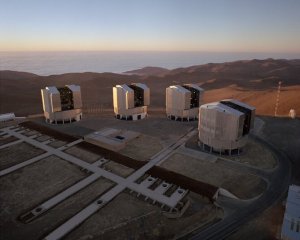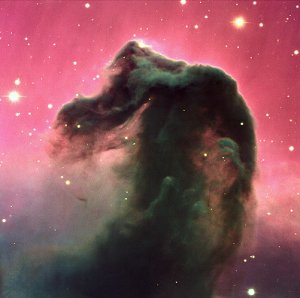Very Large Telescope (VLT)
The Very Large Telescope (VLT) is high up in Chile's Atacama Desert. It is run by the European Southern Observatory (ESO). The VLT is the world's most advanced visible-light telescope. It can see the faintest and most distant objects in the Universe.

Credit: ESO/VLT
The VLT has been part of many key discoveries in space science. These include:
- The movement of a star around a supermassive black hole.
- The first-ever image of an exoplanet.
- Studying the atmosphere of a super-Earth exoplanet.
The VLT is made up of 4 main telescopes which each have an 8.2-metre mirror. It also has 3 smaller telescopes. The VLT can collect light at visible and infrared wavelengths. It has a wide range of science instruments. These tools let scientists study various kinds of objects. It also has adaptive optics systems which stop images from looking blurry.
The VLT uses interferometry to create very sharp images. This means it combines the light from all its telescopes. When all 4 telescopes work together, it can collect as much light as a single telescope with a 16-metre mirror.
Using all 4 telescopes at the same time increases the VLT's resolving power. This means it can separate objects which appear close together in the sky. This is vital when hunting for exoplanets at a similar distance from their star as the Earth is from the Sun - places where life may exist. If the VLT had lower resolving power it would see the star and the planet as one single blob rather than 2 distinct objects.


